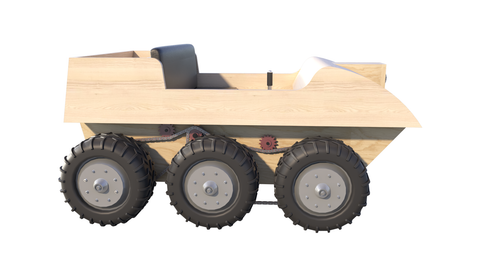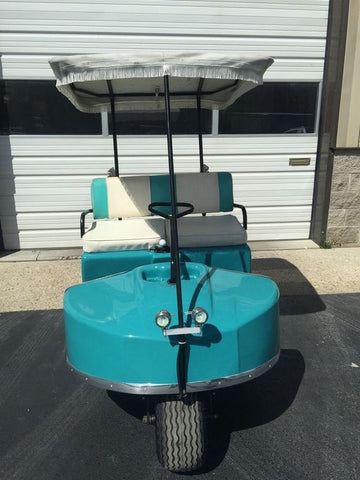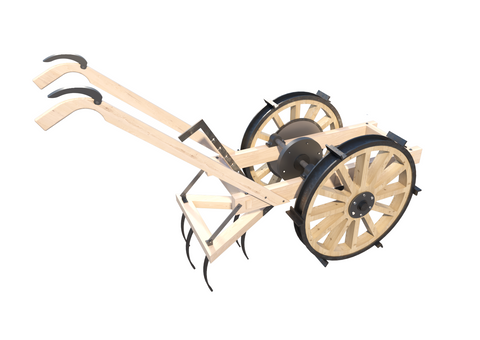Archery Bow free DIY Plans Hunting Shooting Target Practice Sporting Woodworking
These free DIY plans will show you how to build your own Flight Bow.
THE flight bow is the ultimate in the bowyer's field. Many flight bows are made, shot once and then abandoned. Or, they may shatter during that single use and go into discard that way. Just the same, flight bows serve a valid purpose in the archers' world, for they are somewhat like the Formula cars in international racing – paving the way for future developments based on their performance.
To make a record-setting flight bow is the aim and dream of many a ERZ\HUĘD goal all too seldom realized. Because flight bows are the final word in bowery they are seldom, if ever, commercially produced. You just cannot go into your nearest tackle shop and buy a flight bow You may be able to have one made for you, if you're lucky, but essentially the flight bow is a personal thing. It conforms to you and to your ideas. It may be the result of months of planning and days of work and when once it's finished, you will be faced with the decision as to whether or not you'll overdraw just once, is the big gamble that may – or not – pay off.
For these reasons, any plans for a flight bow must be offered somewhat diffidently. They are the end product of someone else's thinking—not yours—and they may not embody the ideas and principles which you, as a bowyer, feel is necessary for success. However, the bow which resulted from these particular plans is a lovely thing, light in the hand, sweet in performance with no harshness on the hand. Surprisingly enough, there seems to be no drastic stacking up at the end of the draw and there is comparatively little pinch. However, since all good flight shooting today is done by means of the hook, the matter of finger-pinch is relatively unimportant.
What is a Flight Bow?
A flight bow is a special type of bow designed for aerodynamic archers arrows. They have high power, cast and speed and are highly aerodynamic. The main differences between flight archery and traditional archery are their lack of consistency and stability, and the string length is cut down to a few strands. New geometries are tested to their utter destruction, and explosives aren't uncommon either. Arrow shooters he will benefit from this.
Competition
The object of flight archery is to achieve the highest distance possible with a given archery bow. Archery competitions are divided into three different classes - freestyle, flight bows and standard target bows. Competition with a flight bow has a number of unique rules. Here are a few of the most important aspects to keep in mind. First, you should know what flight archery is all about. This type of archery is different from regular target archery because it focuses more on speed, power and cast than stability and consistency.
The game is competitive, and it has evolved from military use to the creation of more powerful and stronger bows. The traditional composite reflex bow reached its height of success during the Ottoman Empire. Archers who were able to shoot great distances became recognized as national champions. Today, flight archery is a recognized sport in the World Archery Federation, and is even recognized as an official event. You may be wondering why you should compete with a flight bow.
Equipment divisions
There are three main types of flight bows: traditional recurve, modern compound, and flight arrows. All three must conform to the rules for their equipment divisions, which are the same for both longbows and compound bows. These arrows must have a stiff fletch and be made of wood, carbon fibre, or a combination of the two. Traditional recurve flight arrows are made of several different materials, but most are made of barrelled carbon fibre.
Bare bow archers use string walking, which involves adjusting finger movements to achieve the correct distance for the target. Compound bows also have a tiller that measures the balance of the two limbs. A torque flight compensator is another piece of equipment, which absorbs vibrations caused by the bow. In addition to these, a shooter can hold the grip with the index finger and middle finger.
Rules
The flight bow is a type of archery that uses aerodynamic arrows and is high powered. The rules for flight archery don't take consistency or stability into account. Instead, string length is reduced to a handful of strands. In some cases, limbs are severed to test new geometries. There are even explosives used in the competitions. But, is the flight bow really a better type of bow?
Safety rules are critical to archery safety. Read these rules before shooting. Make sure to follow them. These include not shooting high or into the air. You should also wear arm guards. If you don't follow them, you could injure yourself or hurt someone else. Always check your bow before shooting, and make sure it's in perfect condition. If you feel something isn't right, contact the instructor and seek help.
Practice
The first step to practicing a flight bow is to find a bow that will work for your body and skill level. It is important to choose a bow that is matched to your eye dominance and height, and it should also be of a low draw weight, usually between fifteen and twenty pounds. The draw weight is the force required to pull the string back, and a lower draw weight will make the arrows fly slower, but will also be easier to hold in proper form. If you have a new bow, check it for damage, as a damaged bow can explode and cause injury if not handled properly.
The flight arrow is longer and has very little feathers. Flight shooting focuses on maximum distance, and the bow may be a handbow or a foot bow, which is drawn with both hands while the archer lies flat on the ground. There are also crossbows used in flight shooting competitions, and archers are grouped by the weight of the bows they use to shoot. While archers use various materials, modern flight bows are made of composite materials. The arrows are made from wood or aluminum and fitted with small plastic vanes.
All DIY plans are designed by Ben Stone. Ben is a retired Engineer in Canada. Ben also drafts these himself using the latest AutoCAD software to ensure accuracy. He studied Engineering back in the early 1980's. After over 30 years in the Construction industry he developed a passion for building cool items around his farm and cabin. These are great DIY projects. With a little skill anybody can Do It Yourself. Ben is always a email away if you have any questions while building one of his projects. He is adding new plans all the time.









